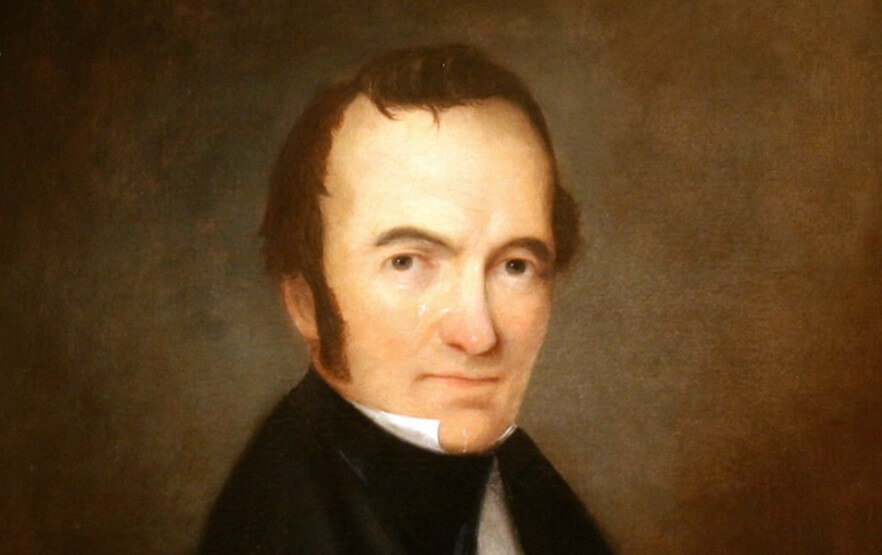Explore the life and legacy of Stephen Fuller Austin (1793-1836), the American colonizer and key figure in the establishment of Texas. From his early years in Virginia and Missouri to his role as founder and administrator of the Anglo-American colony in Texas, Austin’s leadership and pragmatic approach played a pivotal role in shaping the region’s destiny.

Source: wikipedia.org
Stephen Fuller Austin; (1793-1836), American colonizer. As founder and administrator of the principal Anglo-American colony in Texas, he displayed extraordinary qualities of leadership. His astute dealings with the Mexican authorities permitted the settlement to develop until it was strong enough to resist Mexican tyranny when it arose and to win independence. Devoted to Anglo-American principles of common law, he was legalistic in his approach to problems, yet pragmatic in their solutions.
Austin was born in Austinville, Va., on Nov. 3, 1793, the eldest son of Moses Austin and Maria (Brown) Austin. At the age of five he moved with his family to Missouri. He attended Colchester Academy in Connecticut and Transylvania University, Lexington, Ky. Returning to Missouri, he had varied experiences as a trader, land speculator, and a lead miner and manufacturer in association with his father. He also served in the territorial legislature in 1814-1820 and as an officer in the militia.
In 1821, Moses Austin received a grant to settle 300 Anglo-American families in Texas, then a Spanish province. He died in June 1821, bequeathing the grant to his son. In December of that year, with the consent of the Spanish governor of Texas, Stephen established the colony along the Gulf of Mexico on the lower reaches of the Colorado and Brazos rivers. (Under later contracts, he settled about 750 additional families.) As civil and military leader, he assumed the responsibilities of liaison with civil authorities and of organizing defenses against hostile Indians.
Because of unsettled political conditions in Mexico, Austin spent much of his time in clarifying the legal position of the Anglo-American colonists in Texas. To this end he made two trips to Mexico City, the first in March 1822. On the advice of the governor of Texas he sought validation of his grant by the Mexican government, which recently had been organized after winning independence from Spain in 1821. Uncertainties in Mexico forced Austin to remain until April 1823 to assure continuance of authority in Texas.
Austin made a second journey to Mexico City in 1833. By that time, tensions between the Mexican government and Texas had become severe, resulting from increasing eiforts of the Mexican government to assert control over Texas and to limit the influence of the rapidly growing Anglo-American population. After a revolution in Mexico gave promise of improved conditions, Texans met in convention in 1832 and the following year to prepare petitions asking redress of certain grievances and requesting Mexican statehood independent of Coahuila, to which Texas had been joined in 1824. Austin agreed to deliver the petitions to the Mexican government. In 1834, President Antonio Lopez de Santa Anna granted some requests of the Texans, including the repeal of an anti-immigration decree of 1830. He denied, however, the appeal for separate statehood.
While returning to Texas, Austin was arrested in Saltillo and sent to prison in Mexico City. The charge against him, though never pressed, was an allegedly seditious letter that he wrote while frustrated in talks with Santa Anna’s predecessor concerning the petitions. When finally released in 1835, Austin had abandoned hope for the future of Texas as a part of Mexico. Thus upon returning in September he joined a movement in Texas calling for the assumption of a strong stand against the growing tyranny of Santa Anna. Austin accepted chairmanship of the Committee on Public Safety, which had been organized to watch over relations with Mexico; and when a general convention was called to define Texas’ new status, he was elected its president.
Meanwhile, military action of the Texas Revolution had begun on Oct. 2, 1835. Austin left the convention and joined a Texas army congregating at Gonzales. Elected commander in chief, he led a campaign against San Antonio, Mexico’s military headquarters in Texas. While he was directing a siege against the city, the convention in November appointed him as one of three commissioners to the United States to seek recognition of Texas if independence was declared, to raise material aid, and to enlist volunteers. This business kept him out of Texas during the main phase of the Texas Revolution.
Austin reluctantly agreed to be a candidate for the first presidency of the Republic of Texas after his return in June 1836. Defeated in the election by Sam Houston, he accepted an appointment as secretary of state and was serving in that capacity when he died at Columbia, Texas, on Dec. 27, 1836.